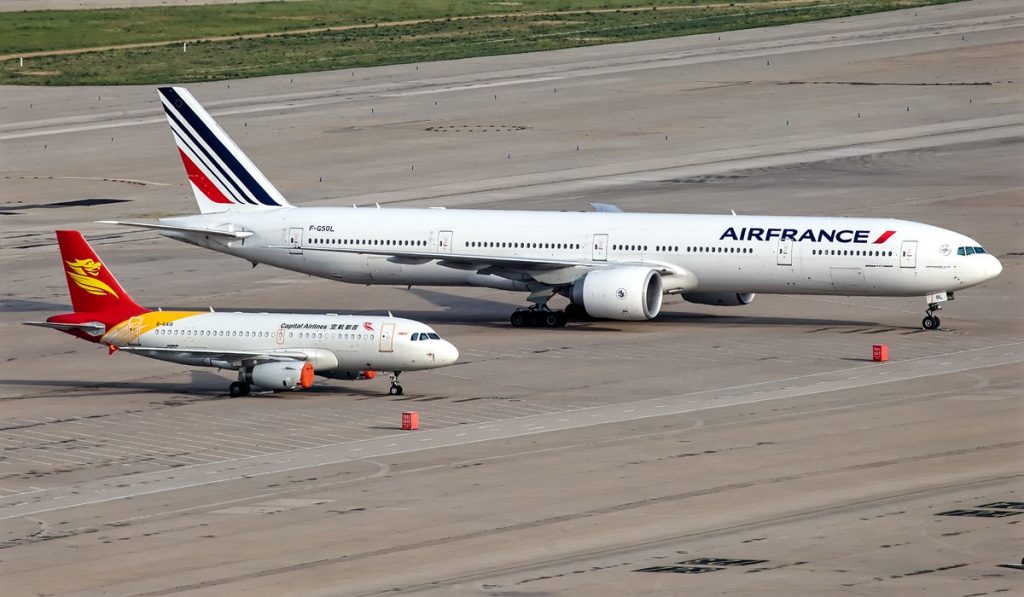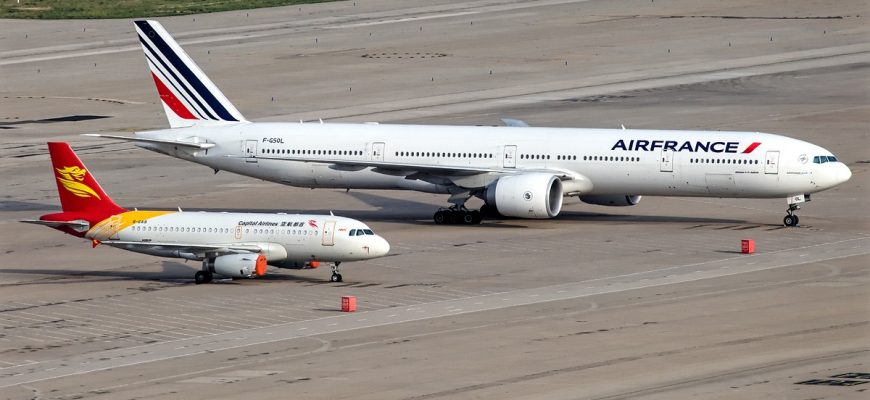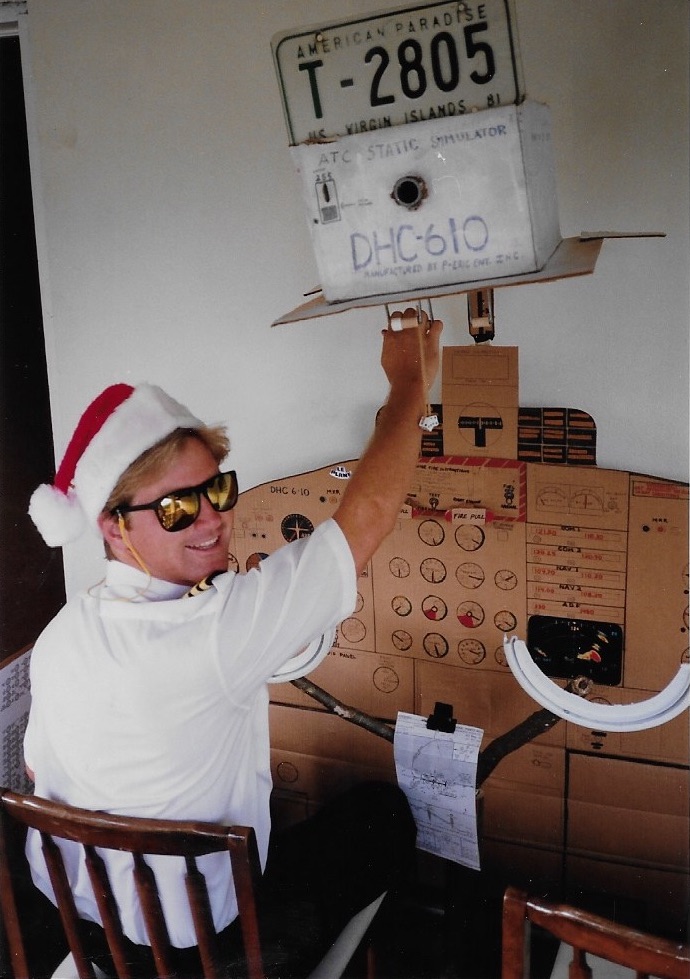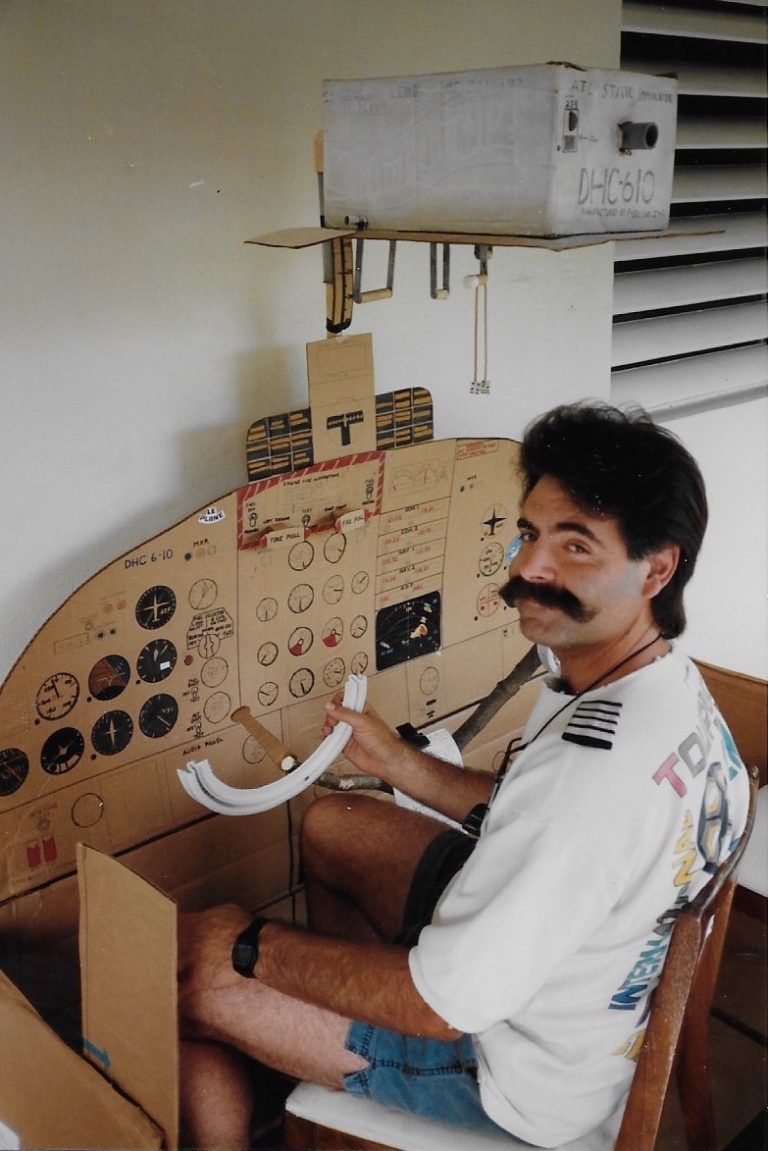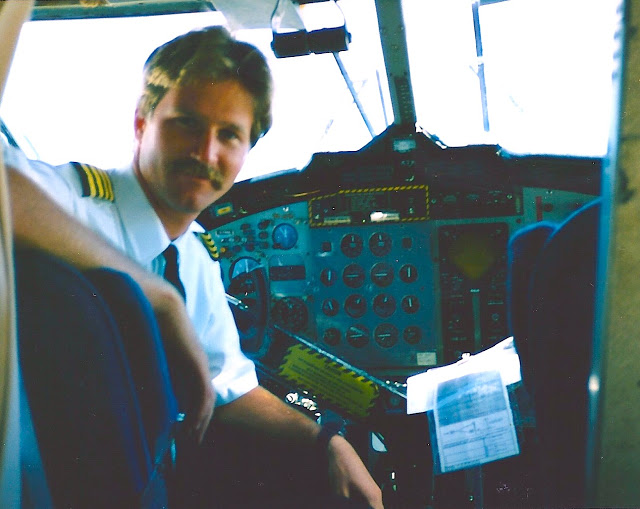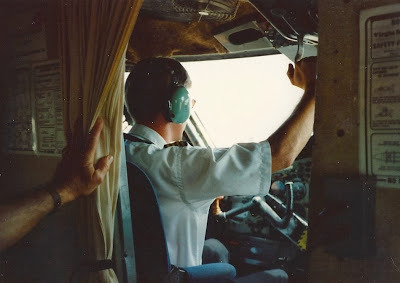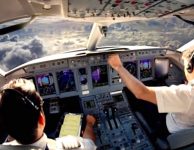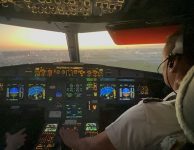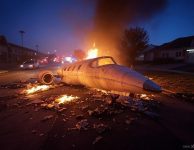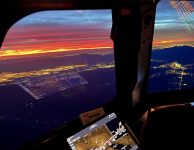A Tale of Two Upgrades
A Tale of Two Upgrades
Cap'n Aux Explores Airline Training, from initial new-hire "Copilot" to the Captain Upgrade
Folks, from the Flight Blog, welcome aboard!
Everyone loves an upgrade to First Class. And, when it comes to pilots, almost everyone loves an upgrade to the Captain’s seat! But, how does that happen? Today we’ll explore.
As you probably know, I recently bid over to the B-777 Captain position. While official classroom and simulator training won’t start until mid-November, I’ve been hard at work doing the required online studies, from their very well-organized systems course, to reading the B-777 manuals, and brushing up on the Company S.O.P.s. By the time I walk into class, I will have been studying several hours a day for nearly two months.
Then the real fun begins!
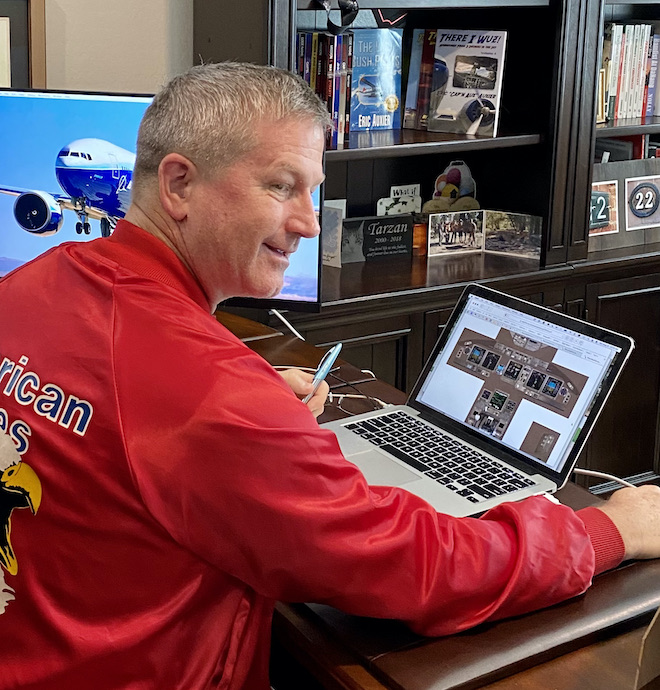
A Tale of Two Upgrades—Seniority
As we explored in our “Bid Life of an Airline Pilot” post, typically, an airline trains and places pilots into their various positions by one word: seniority—that is, length of time employed.
As I’ve said many times in this blog, at most airlines, seniority is everything. Basically, how long you’re with an airline dictates your options. The longer you’ve worked there, the more options you have.
Almost always, a new-hire pilot—having virtually “no” seniority—will be placed into the airline’s smallest plane, in the right seat, or First Officer’s (FO) seat—known colloquially as the “Copilot” seat.
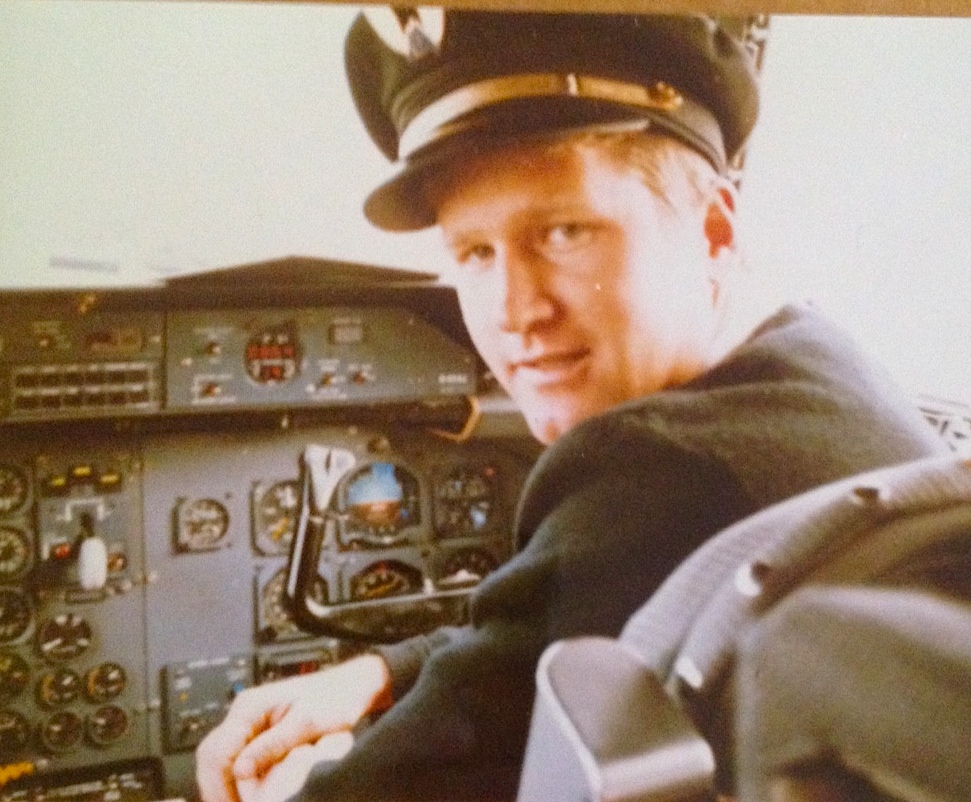
As mentioned, as an FO’s seniority increases, more opportunities open up. S/he can:
- Stay in the same plane/seat/base, with increasing quality of life (i.e. ever-improving work schedule.)
- Move to another base.
- Upgrade to a larger plane in the right seat, such as a wide-body (possibly with more pay.)
- Upgrade to Captain in the same plane, or another equivalent-size.
(Note: It isn’t about “size” per se, but most airlines have higher pay scales for the larger-seat capacity planes.)
Jihadi Hijacking
Code Name: Dodger Mission 3
by Eric Auxier
(Missions can be read in any order)

A Tale of Two Upgrades—The Process
During his/her career at a given airline, a pilot will most commonly take the following route:
- Right seat of a narrow-body jet that flies domestic routes (B-737, A-321, etc.);
- Move to Right Seat of a larger, wide-body International jet (A350, B777, B787, etc.);
- Upgrade to the Left Seat (Captain) of a domestic jet, and finally,…
- Upgrade to the Left Seat of the international jet.
Note: 2. and 3. above are somewhat interchangeable. Also, some pilots choose to not move around/upgrade, and enjoy the ever-improving schedules of the #1, 2 or 3 options.
For example, a pilot in my new-hire class (Class of November 1990) took the following route: 1-3-2-4. She upgraded to A321 Captain (#3) about the same time I did, in 2000. A few years ago, she made the move to actually downgrade to the Right Seat, but this time in an international wide-body—the B787 (move #2). Just this August, she upgraded to the Left Seat (#4) of the B787.
A Tale of Two Upgrades—My Move
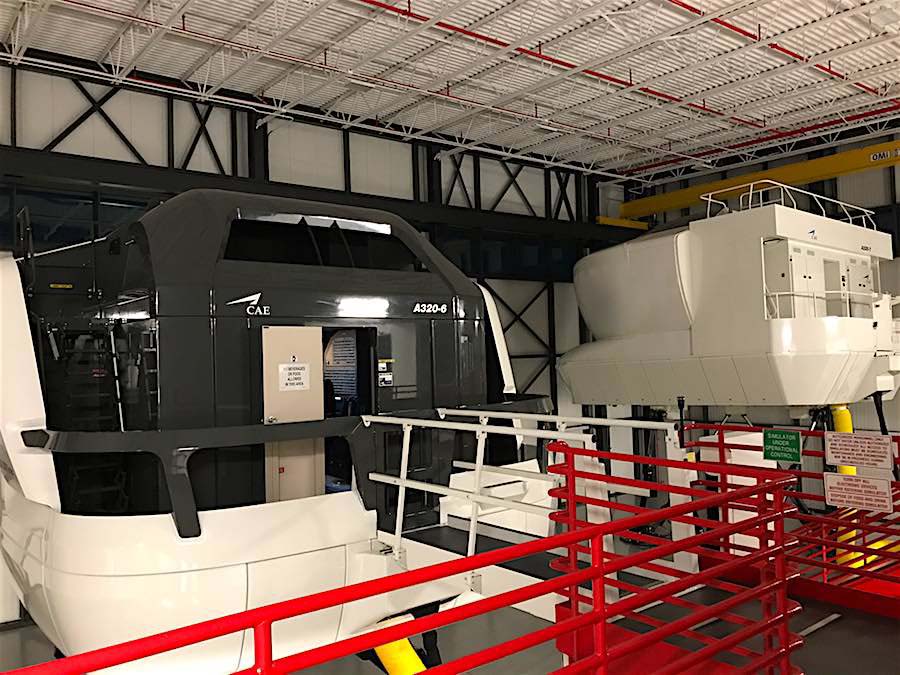
While my classmate took a somewhat typical route (reversing moves 2 and 3), I’m skipping that # 2 step and going straight for the gold, upgrading to the Captain’s seat of the B777.
The reason I missed out on move #2 is that, for a long time, the International side of flying was not available to me (chalk this up to the logistics of two airline mergers). Also, I enjoyed remaining in PHX base, my home town, which is not an international base (except for Canada & Mexico.)
While I could have followed in the footsteps of my classmate, I simply enjoyed the flying too much to change!
A Tale of Two Upgrades
Which is Best?
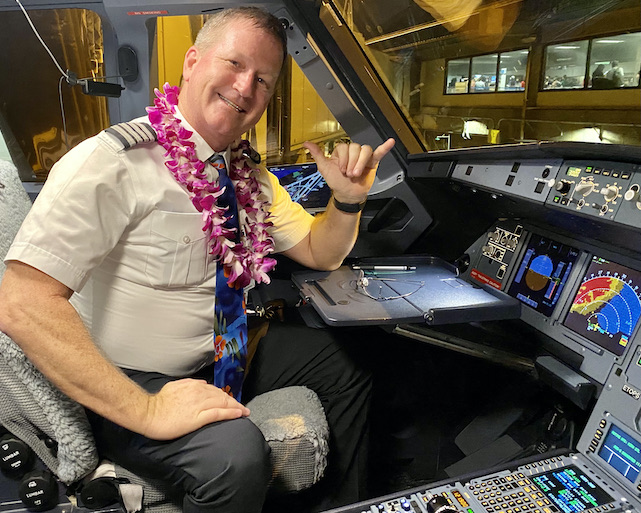
Candidly, I believe my classmate made a wise move. She jumped over to the B787 fleet to “get her feet wet” as an FO, learn the ropes, the systems, etc.
While it may have been a bit of a pay hit for her, this, no doubt, helped immensely during the upgrade. Moreover, as a very senior pilot in the Right Seat, she would have been able to fly the pick of the litter schedules. As I said, wise move!
Conversely, I’ve got a lot to bite off and chew:
- New plane
- New systems
- New computers
- Boeing logic vs. Airbus logic
- New routes (int’l/overseas/long haul)
- New “cockpit culture” (3-4 pilot crew vs. 2-pilot)
- New…everything!
Training on a New Plane
When we upgraded to Cap’n on the DhC-6 Twin Otter for the Virgin Islands Seaplane Shuttle (circa 1988), the ever-innovative Cap’n Pierre and I made this paper mockup of the cockpit—the original “Le Fifi!” (See our post, “Pilots of the Caribbean” for that adventure!)
My cohort, already having a type rating, and flown the B787 on the line, probably went through a “shortened” course for her upgrade. But, for a new hire, or one moving to a new plane, a full training course is in order.
So, this is what I’m in for:
- Online study of Systems and manual reading (what I’m doing now.)
- Ground school—typically 1-2 weeks long.
- Simulator—typically a couple weeks of 4-hour simulator sessions per day, studying all procedures, normal and emergency.
- 3 takeoffs and landings (what we call “bounces”) in the real McCoy.
- FAA Checkride—a grueling oral exam and ride in the sim with an FAA-designated examiner, testing every nook and cranny of the pilot’s knowledge and skills in the plane.
- IOE (Initial Operating Experience). Once fully checked out, the new pilot will be “baby sat” by a designated check airman for x number of hours, while flying the line with passengers on live flights.
- Once cut loose, for the 1st 100 hours in the plane, the pilot will be on “high minimums”—that is, additional weather restrictions, just to be safe.
The entire process, from start to finish, should take approximately 1-2 months. At any time, the pilot may need or request additional training before feeling “up to speed” in the new machine.
Which reminds me…
I'd better get back to studying!!
Till the next blog post,
This is Cap'n Aux...
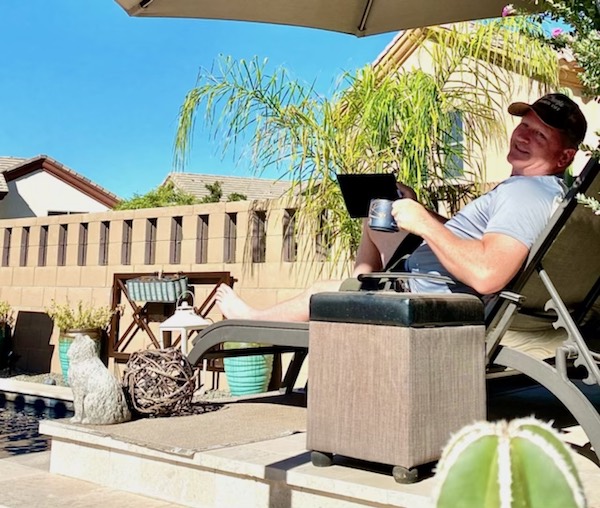
Studying off!
This Post is Dedicated to the Loving Memory of Arwen
It is with sad regret that we must report the passing of Team Aux’s Senior Editor, Arwen kitty. Eighteen years old, she lived a great life. Always polite, always smart, and always sweet!
You will forever live in our hearts!
Related Links
- ALL Cap’n Aux Books https://www.amazon.com/Eric-Auxier/e/B00971H8VW
- As the Turbine Turns https://capnaux.com/as-the-turbine-turns/
- The Bid Life of an Airline Pilot https://capnaux.com/the-bid-life-of-an-airline-pilot/
- Pilots of the Caribbean https://capnaux.com/there-i-wuz-pilot-of-the-caribbean/
- Part 2: Stranded in Paradise https://capnaux.com/pilot-of-the-caribbean-part-2/
- The Airline Cockpit in 7 Steps https://capnaux.com/airline-cockpit-7-steps-updated/
- Top 10 Downers of an Airline Pilot Career https://capnaux.com/top-10-downers-of-an-airline-career/
- Top 10 Things to Never Say to a Pilot https://capnaux.com/top-things-never-to-say-to-a-pilot/
- The Post-Covid Future of US Aviation https://capnaux.com/the-post-covid-future-of-u-s-aviation/
- Flying in the Age of Covid https://capnaux.com/flying-during-covid/
- Life of a Test Pilot https://capnaux.com/the-occasionally-exciting-life-of-a-test-pilot/
- WOTR Video: It’s What Pilots Do! https://capnaux.com/word-on-the-ramp-video-its-what-pilots-do/
- Confessions of a Former Airline Pilot https://capnaux.com/confessions-of-a-former-airline-pilot/
- The Making of a European Pilot https://capnaux.com/the-making-of-a-european-airline-pilot/
- Lessons From the Miracle on the Hudson https://capnaux.com/forced-landings-pilot-lessons-from-the-miracle-on-the-hudson-part-1/
